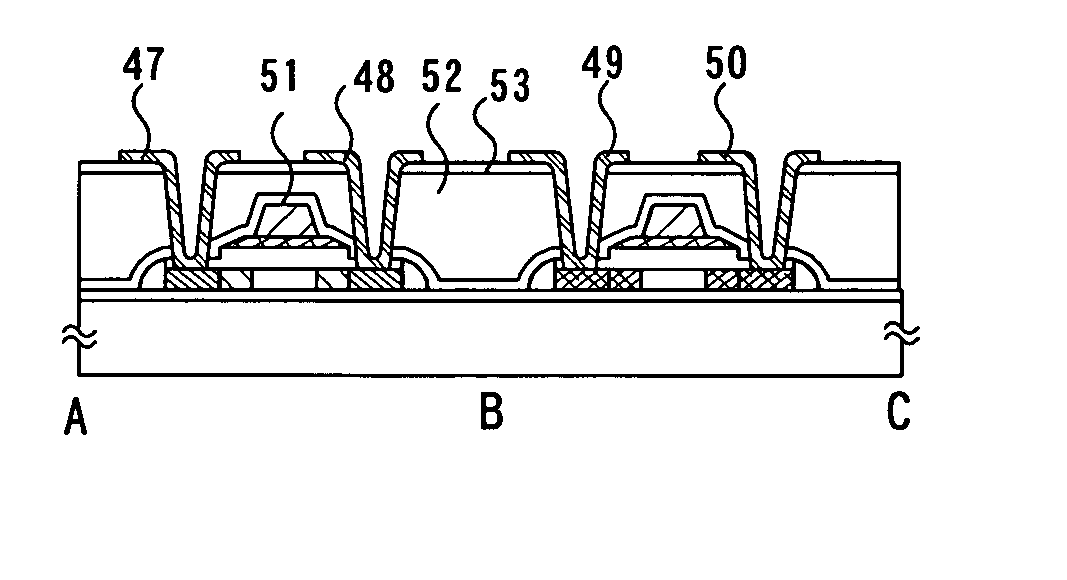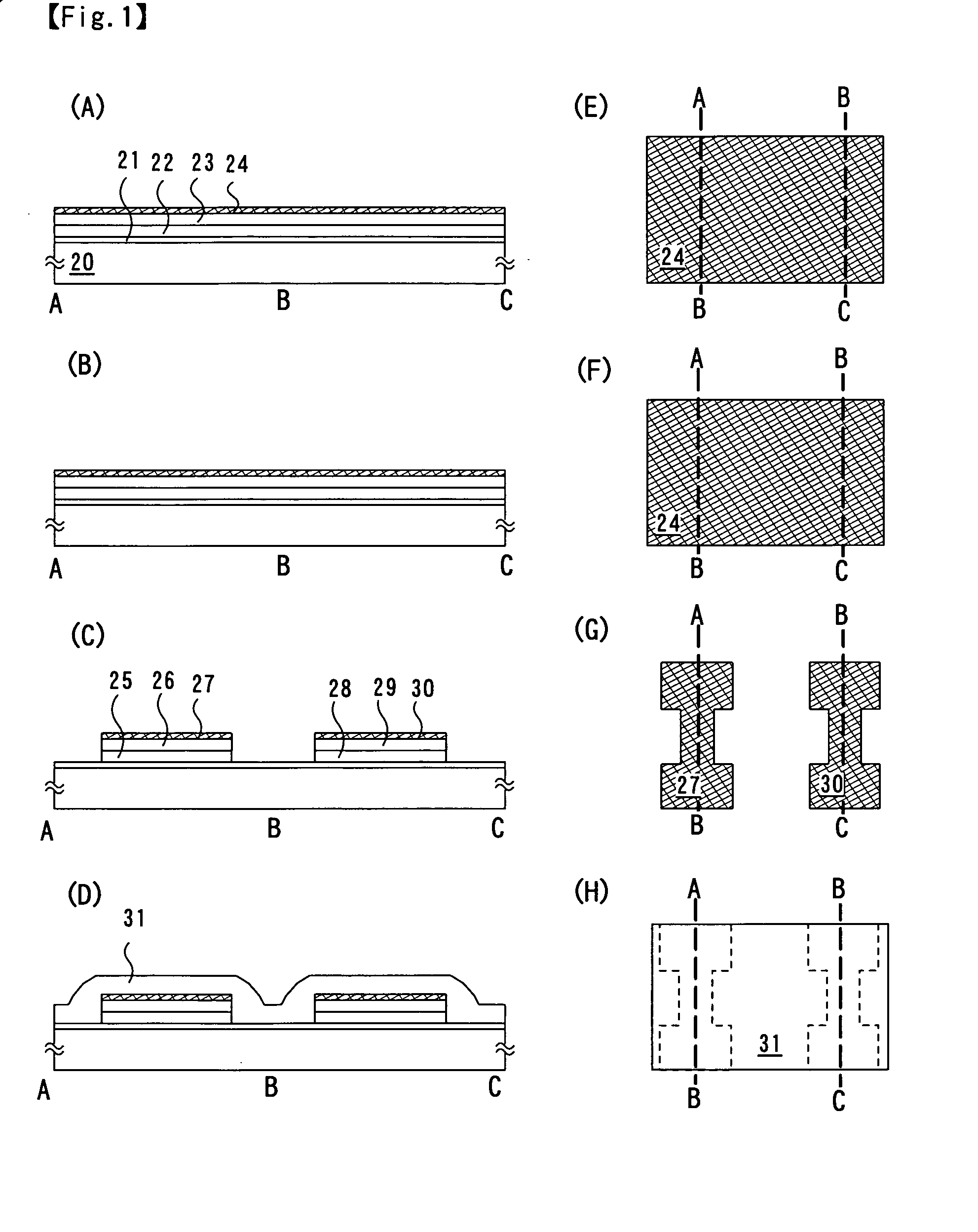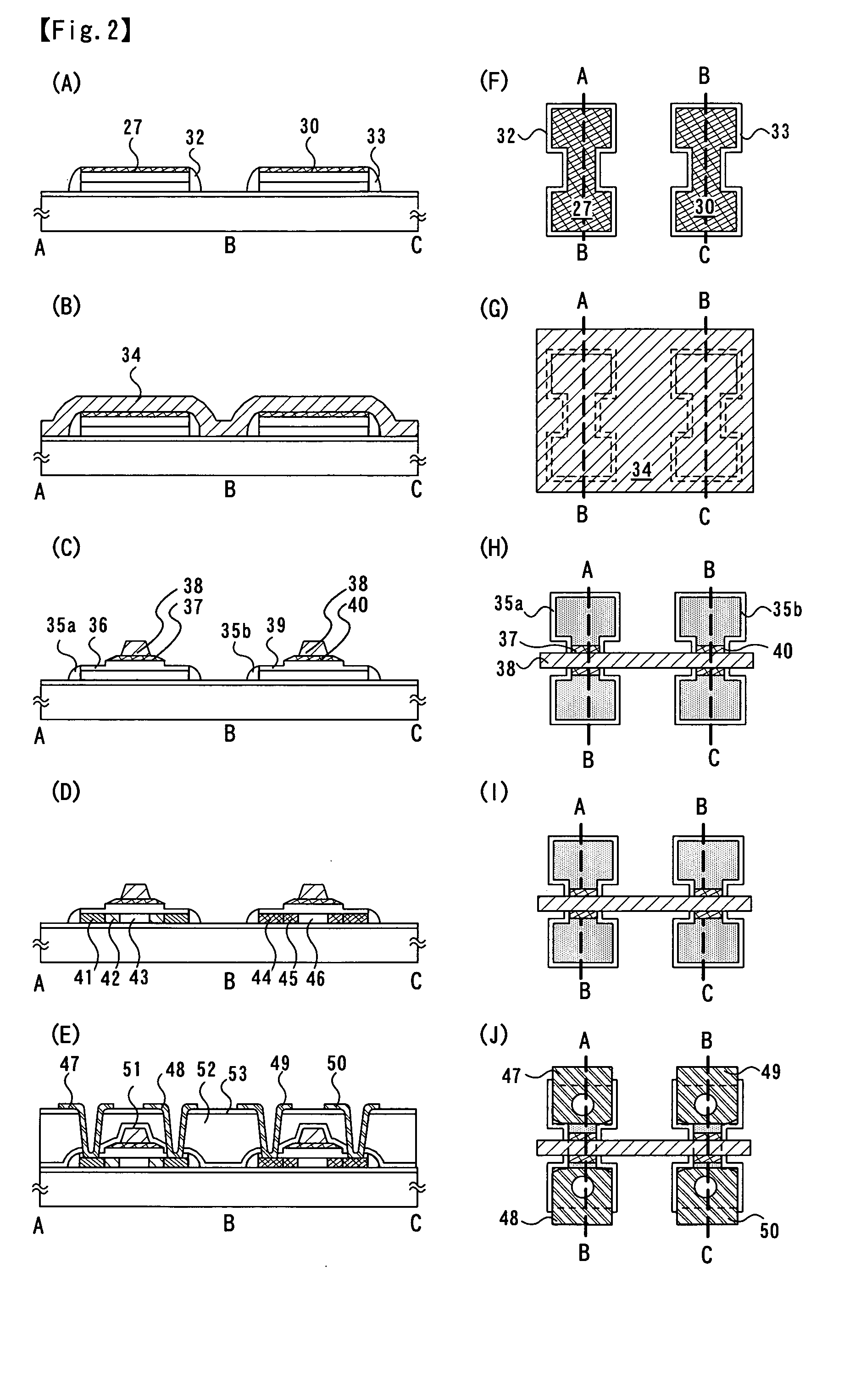Thin film transistor, electronic device having the same, and method for manufacturing the same
a technology of thin film transistors and electronic devices, applied in the direction of semiconductor devices, basic electric elements, electrical equipment, etc., can solve the problems of gate leakage current, misalignment, and film fine enough to be generally used as gate insulating films, etc., to reduce fixed charges, reduce interface levels, and reduce gate leakage current
- Summary
- Abstract
- Description
- Claims
- Application Information
AI Technical Summary
Benefits of technology
Problems solved by technology
Method used
Image
Examples
embodiment
[0038] Embodiment Mode 1
[0039] A glass substrate made of a material such as barium borosilicate glass, alumino borosilicate glass, or aluminosilicate glass, or the like can be given as a substrate which can be applied in this embodiment mode. Typically, a 1737 glass substrate (strain point: 667° C.) manufactured by Corning, Inc., AN100 (strain point: 670° C.) manufactured by Asahi Glass Co., Ltd., or the like can be applied, but there is no particular limitation on other similar substrates.
[0040] A first inorganic insulating layer 21 made of an insulating film such as a silicon oxide film, a silicon nitride film, or a silicon oxynitride film (SiOxNy) is formed over a glass substrate 20, as shown in FIGS. 1(A) and 1(E), using the above substrate. A typical example of the first inorganic insulating layer 21 has a two-layer structure, which is a structure where a first silicon oxynitride film formed to be 50 nm in thickness by a plasma CVD method using SiH4, NH3, and N2O as a reactive...
embodiment 2
[0072] Embodiment 2
[0073] An embodiment of the present invention is described with reference to FIG. 5. FIG. 5(A) is a top view of a display panel formed by sealing a substrate over which a TFT is formed with a sealing material. FIG. 5(B) is a cross-sectional view along a line B-B′ in FIG. 5(A). FIGS. 5(C) and 5(D) are cross-sectional views along a line A-A′ in FIG. 5(A). Note that FIG. 5(C) is a cross-sectional view of a display panel performing bottom emission in which light is emitted in a direction of the substrate over which a TFT is formed. FIG. 5(D) is a cross-sectional view of a display panel performing top emission in which light is emitted in a direction opposite to the substrate over which a TFT is formed.
[0074] In FIGS. 5(A) to 5(D), a pixel portion (display portion) 602, a signal line driver circuit 603 which is disposed to surround the pixel portion 602, scanning line driver circuit 604a, and scanning line driver circuit 604b are all disposed over a substrate 601, and...
embodiment 3
[0080] Embodiment 3
[0081] The following can be given as examples of electronic apparatuses to which the present invention is applied: a video camera; a digital camera; a goggle type display; a navigation system; an audio reproducing device (car audio, or the like); a laptop computer; a game machine; a personal digital assistant (a mobile computer, a cellular phone, or the like); an image reproducing device including a recording medium; and the like. Practical examples of these electronic apparatuses are shown in FIG. 6.
[0082]FIG. 6(A) shows a light emitting device, which includes a chassis 2001, a supporting section 2002, a display portion 2003, speaker portions 2004, a video input terminal 2005, and the like. The present invention can be applied to the display portion 2003. The light emitting device is self-luminous and does not need a backlight, so that the display portion can be made thinner than that of a liquid crystal display. Note that the light emitting device includes all ...
PUM
 Login to View More
Login to View More Abstract
Description
Claims
Application Information
 Login to View More
Login to View More - R&D
- Intellectual Property
- Life Sciences
- Materials
- Tech Scout
- Unparalleled Data Quality
- Higher Quality Content
- 60% Fewer Hallucinations
Browse by: Latest US Patents, China's latest patents, Technical Efficacy Thesaurus, Application Domain, Technology Topic, Popular Technical Reports.
© 2025 PatSnap. All rights reserved.Legal|Privacy policy|Modern Slavery Act Transparency Statement|Sitemap|About US| Contact US: help@patsnap.com



